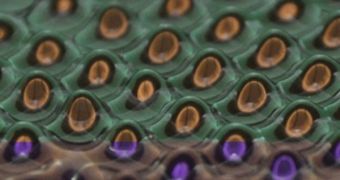Before the Copenhagen interpretation for quantum physics was established as the main theoretical foundation for this field of research, numerous theories were proposed to explain behavior at the quantum scale. Now, fluid dynamics experiments revive on of those idea.
In a series of experiments, researchers at the Université Paris Diderot, led by physicist Yves Couder, demonstrated that small droplets of liquid can be made to behave like quantum particles.
The results indicated that the small droplets were capable of bouncing up and down on a vibrated fluid bath, as they were carried away by waves that they themselves produced.
This reminded the science team of the abandoned pilot-wave theory, which was one of the primary attempts of interpreting the emerging field of quantum physics in the early decades of the 20th century.
One of the most visible visible phenomena is the tendency that the elementary building blocks of the Universe have, of acting as both a wave and a particle. Such is the case with light particles called photons, for example.
The pilot-wave theory basically proposed that moving particles at a very small scale are guided along by some type of quantum wave, like debris on the surface of the sea.
The Copenhagen interpretation took another approach to explaining the phenomena, which eliminated the need for the concept of carrier wave to be used.
But the new investigations, carried out using the laws of fluid dynamics on millimeter-scale droplets, demonstrated that this system can be used as a proxy for studying quantum particles.
Details of the approach appear in a recent commentary published in the latest issue of the esteemed journal Proceedings of the National Academy of Sciences (PNAS).
According to John Bush, it could be that experiments similar to the ones developed by Couder might help physicists shed some light on some of the mysteries surrounding the quantum world.
The expert holds an appointment as an applied mathematician at the Massachusetts Institute of Technology (MIT), in Cambridge.
“With Couder’s system, one can now explore aspects of wave-particle duality in a fluid system,” Bush explains, adding that he wants to continue investigations in this field at his MIT lab.
“How might the development of quantum mechanics have differed had Couder’s system been known to its founding fathers?” the expert concludes.

 14 DAY TRIAL //
14 DAY TRIAL //